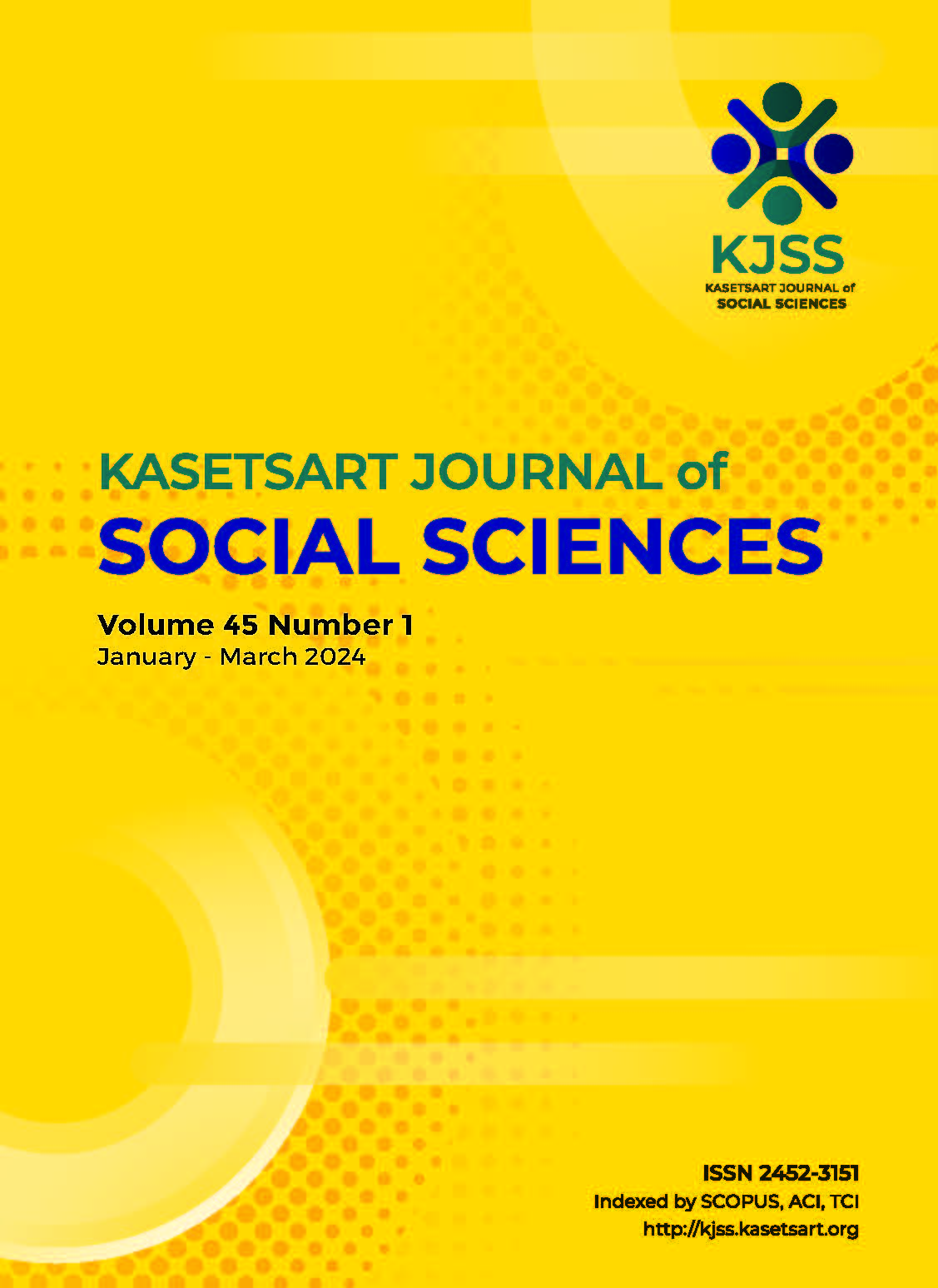Income distribution, poverty incidence, social class and human capital in the time of COVID-19 crisis: Evidence from Thailand’s household survey
Keywords:
household socio economic survey, human capital, income inequality, income distribution, poverty incidenceAbstract
Using the 2021 Thai Household Socio-Economic Survey data (SES2564) collected during the fourth wave of the COVID-19 epidemic by the National Statistical Office, this research performs statistical analysis on income distribution and poverty incidence differentiated by income sources and social class. The Gini coefficient is calculated to be 0.5021. Consequently, it is decomposed into between-group and within-group contributions to investigate the marginal contribution of each income source (e.g., wage, government transfer, pension, remittance, farm, non-farm) to the income inequality. The results show that the primary sources of inequality are pension,
farm, and non-farm incomes, respectively. Different income sources have a different impact on inequality. Remittance, government transfer, and farm incomes have a negative impact on total income inequality. Therefore, increasing government transfer income, remittance, and farm income has alleviated income inequality. In contrast, an increase in wage, pension or non-farm incomes has led to greater inequality in household income. Using the FGT technique, the relative poverty line is around 60 percent of median income per capita; therefore, 22.18 percent of the total population was considered poor. A poverty gap, FGT(1), showed 6.42 percent, meaning that on average the poor had 285.89 Baht/month deprivation under the poverty line. The landless farmers class has the highest headcount ratio of the poor (41%) and the highest risk of being poor (187%).
Downloads
Published
How to Cite
Issue
Section
License

This work is licensed under a Creative Commons Attribution-NonCommercial-NoDerivatives 4.0 International License.
This is an open access article under the CC BY-NC-ND license http://creativecommons.org/licenses/by-nc-nd/4.0/










